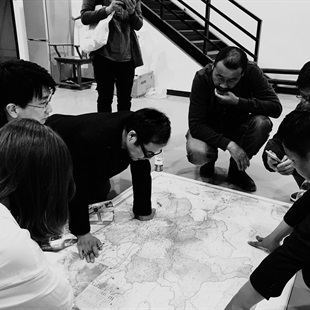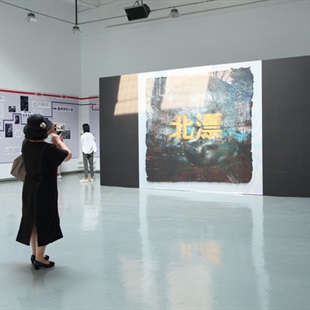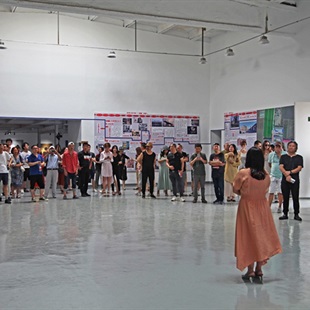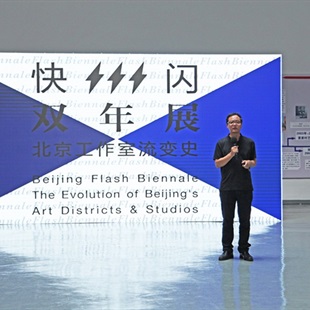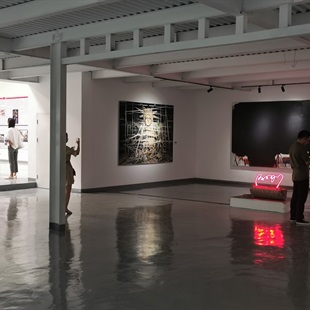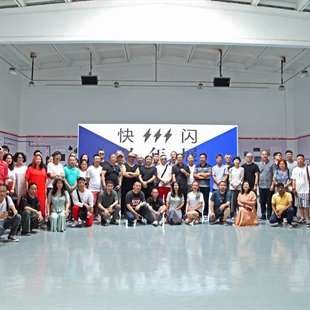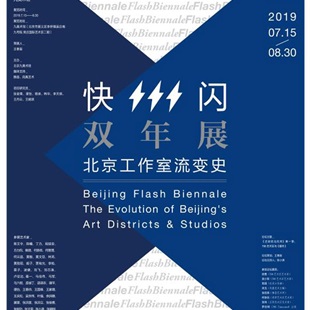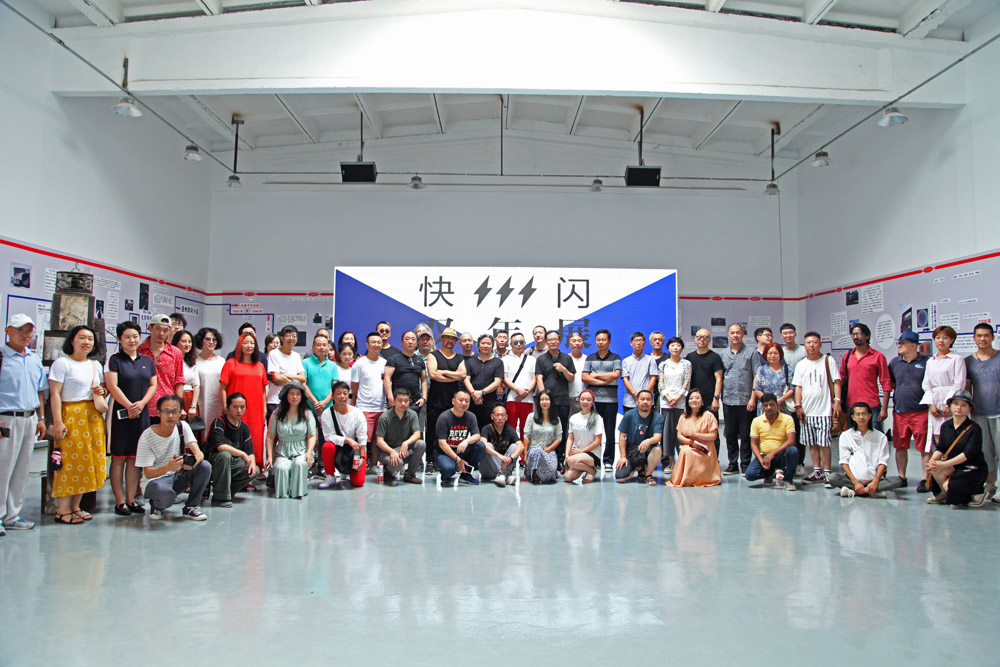
What does a site mean to artists? Is it a place of life, of art creation, or the art itself?
With the development of modern society, the sites where artist groups gather are conceptualized and they become unique cultural symbols. Such a site enables artists independence and freedom, while the reality of survival makes them gather and scatter. In this case, “site” becomes a significant layer in terms of touching artists and their artworks, as well as a crucial fundamental point in terms of researching the phenomenon of the gathering of artist groups.
Exhibited in 9 Art Museum, the exhibition “Beijing Flash Biennale—The Evolution of Beijing’s Art Districts & Studios”, narrates the migration route of Beijing art districts that were developed by sites and artists from the end of the 1980s till now.
The exhibition delves into some of the realities in Chinese contemporary art history, sifts through the “sites” behind the survival of artists, and therefore develops a unique research topic. The birthplaces, the exhibiting venues and the final destinations of artworks are separated by an invisible distance, which is easy to be ignored by us. The significance of sites for artworks is an unavoidable problem for contemporary art. The birthplaces and the environment of art creation turn out to be the origin of the brewing of art.
By being displayed in a positive perspective, the exhibition showcases the evolution of art districts in Beijing to the audience. On the exhibition wall, an ample amount space is used to record both existing and vanished art districts in Beijing, which allows viewers to read the starting point of Beijing art districts and to continually explore the next one beginning.
Through digging into the migration route of the Beijing art districts, many active thoughts appear to attract eager exploration. Through viewing the records of art districts from 1990 to 2019, a sizeable amount of valuable material is presented to be researched.
At the end of the 1980s, the Old Summer Place (aka. Yuanmingyuan Park) in the western suburb of Beijing accepted a group of young people who were engaged in art. They were eager to get rid of the restriction of the system and to practice independent art creation. They have cultivated the flower of the new era art on the historical ruins of the Old Summer Place. With the formation of the concepts such as Political Pop Art and Cynical Realism, artists Fang Lijun, Yue Minjun among others were becoming famous. It turned the Old Summer Place into a national artists’ dream destination and attracted an increasing number of artists to move in.
Infancy Period
The early 1990s was the burgeoning period of the Beijing art districts, which was mainly demonstrated by the rise of Painter Village in Yuanmingyuan (圓明園畫家村). Artists Fang Lijun, Hua Qing, Zhang Dali, Mou Sen, Gao Bo, Zhang Nian and Kang Mu among others, gathered there. In 1995, Painter Village in Yuanmingyuan was forced to be cleaned due to a government notice, which turned the ruins of the Qing Dynasty once again into the ruins of art. In this circumstance, artists scattered to all corners of Beijing. Using this as an opportunity, the evolution of Beijing art districts officially commenced.
Development Period
During the entire 1990s, Beijing art districts gradually developed in the Binhe Unit in Tong Zhou District(通州濱河小區(qū)[原文賓河小區(qū)]) and East Village Art District(東村藝術(shù)區(qū)). Later on, Song Zhuang Art District(宋莊藝術(shù)區(qū)), Bei Gangzi Art District(北崗子藝術(shù)區(qū)) and Shang Yuan Art District(上苑藝術(shù)區(qū))appeared in the late 1990s.
Blowout Period
After 2000, art districts such as 798 Art District, Hua Jiadi Community(花家地群落), Feijiacun Art District(費(fèi)家村藝術(shù)區(qū)), Caochangdi Art District (草場地藝術(shù)區(qū)), 9-Art District(酒廠-ART國際藝術(shù)區(qū)), No.1 in Five Rings Art District(五環(huán)一號(hào)藝術(shù)區(qū)) and Suojiafen Art District(索家墳藝術(shù)區(qū)) appeared as well.
Prosperous Period
From 2006 to 2010, it was the period of prosperity of the development of the Beijing Art Districts. Art districts such as the Left and Right Art District, No.1 International Art District, Huan Tie International Art District, Bei Gao Art District among others appeared in succession.
Dispersion and Migration Period
It was between 2010 to 2017 that the development of Beijing art district entered the period of dispersion and migration. Sun He Art District(孫河藝術(shù)區(qū)), Bei Tang Art District(北塘藝術(shù)區(qū)) and Yong He Art District(雍和藝術(shù)區(qū)) etc. appeared during this period.
Star-shaped Distribution
From 2017 till now, the distribution of art districts in Beijing has transformed to be star-shaped. Art districts such as Bai Ma Art District(白馬藝術(shù)區(qū)), Shun Yi T3 Art District(順義T3藝術(shù)區(qū))etc., appeared in succession.
The evolution history of Beijing art districts from the 1990s to nowadays has spanned various periods and experienced multi-dimensional spatial differences. However, the transformation of time and space is only representative. The rise and fall of art districts created a game between different powers outside art.
With the requirements of the process of urbanization in Beijing, the demolition of several art districts has forced artists to migrate. The migration, although with complex pain, proves the resilience of artists. The value of early art districts lies in providing motivations of art creation to artists. However, art districts in this era, such as 798 Art District, have developed their art values utilizing systematical art management. The success of 798 Art District has gradually developed a commercial method or mode to fit into art districts. By doing so, art districts are becoming increasingly formal and commercial, and the value of the artist cluster is gradually expanded.
There is another exhibition space apart from the migration route of the Beijing art district that echoes the theme of this exhibition. By displaying artworks from artists living in various art districts, the relationship between an artwork’s origin and termination is unconsciously considered by viewers. The works in this space make up for and compensate for the missing content in the first section, and inspire audiences to reflect on the influences of different artworks.
It is an exhibition based on long-term research. The evolution of the Beijing art districts has become a vital footprint for the development of Chinese contemporary art and gradually showcases the significance of the current situation. The exhibition turns the direction of the research regarding Chinese contemporary art to a new field, namely, the relationship between the sites that artists are living and the production and development of art. Although not being presented directly in the exhibition, it is implied in the content of the exhibition that it should be a result based on great efforts in research.
The exhibition narrates the history and today’s reality, proving that the present existence is constantly moving forward based on the memory of the past.
Text by Lin Lu
Translated by Emily Weimeng Zhou
Edited by Sue/CAFA ART INFO
Photo courtesy of the organizer


